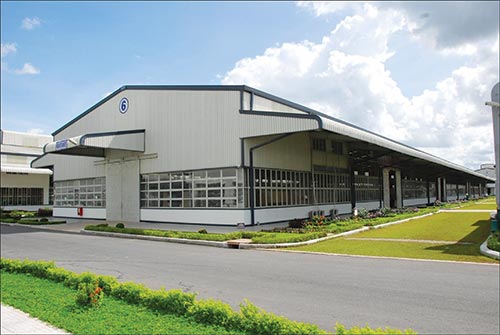Green building - a better approach

Green building is one way for a company to differentiate itself in the market
Green buildings are buildings designed, built and operated to reduce their environmental impacts and provide a healthier living and working space. There are three popular green building certifications in Vietnam namely LEED issued by the US Green Building Council, or USGBC, Green Mark recognised by the Singapore Building and Construction Authority, or BCA and LOTUS issued by Vietnam Green Building Council, or VGBC. Since the first LEED project registered in Vietnam in 2008, some 50 projects have either been registered or been certified under these regimes. Some 30 projects have been under LEED certification with LOTUS and Green Mark recognising 10 projects each respectively.
However, the number of projects does not reflect the green building development of Vietnam. All the projects under the Green Mark scheme were developed by Singaporean developers such as Capitaland and Keppel Land. 60 per cent of projects under the LEED scheme were invested by FDI investors for their manufacturing facilities that export products to the US and EU markets. Looking to major cities in the region, Kualar Lumpur has 90 projects, Bangkok has 38 and Phnom Penh has 7 projects under the LEED scheme. HCMC has just one project, President Place, with LEED certification.
Green building has received large amounts of media coverage and recognised as a growing trend. A series of conferences have been organised at various levels about this topic. “Green construction is an indispensible goal of construction industry in the future,” said the Deputy Minister of Ministry of Construction Phan Thi My Linh at Annual Green Building Conference organised by VGBC in HCMC this September. However, green building development in Vietnam is still slow compared with other countries in the region despite the similar starting point about 5 years ago. There are many reasons leading to this situation but the most important one, according to Quang, is that both consultants and clients in Vietnam are still not clear about the benefits of going green.
Various benefits
First and foremost, green building is strictly designed, built and operated to reduce utility costs and therefore operation costs. On average, one green building can achieve 20 per cent in energy savings and 40 per cent in water savings compared with baseline or normal buildings. In the long run, green building appears less risky with the increase of operation cost as utility costs are always on increasing trend.
For commercial and residential projects, the sale and rental prices of green buildings are normally higher than normal buildings. A representative of the World Bank’s International Finance Corporation Autif Sayyed speaking at the Green Building Annual Conference said that the average price of LEED homes in California is 9 per cent higher than conventional alternatives and 4 per cent higher in Singapore. In manufacturing industry, green factories will have advantages to receive orders or sustainability is equally considered with product price. According to a Nike document, the sports-wear group rates their manufacturing facilities based on four criteria including quality, costing, delivery and sustainability. The important thing is Nike equally rates these four criteria meaning a sustainable factory might charge higher for their products.
In addition to these tangible benefits, green buildings also bring various intangible benefits to its investors. Occupants in green building are working in healthier environments so they might have higher productivity. This is a very important benefit as payroll costs are 150 times higher than construction cost of a building with 50-year life cycle. Furthermore, investors still benefit from a better image to all of their stakeholders and to the public because of their contribution to the environment.
In conclusion, investing in green buildings is very feasible if all the benefits and related extra costs are taken into account. The chances are still there for those who take green building to be the first movers. Going green earlier than your competitors might bring a certain competitive advantage over those who are late on this trend.
By Do Huu Nhat Quang Founder of GreenViet
What the stars mean:
★ Poor ★ ★ Promising ★★★ Good ★★★★ Very good ★★★★★ Exceptional
Latest News
More News
- The Kross ascends in Ho Chi Minh City's business heart (October 10, 2025 | 17:16)
- ESG-driven sustainability to define Vietnam’s green real estate (September 19, 2025 | 11:35)
- Tan Thuan Tower open for high value-added and innovative tenants (September 10, 2025 | 10:00)
- The new home of modern business at Hanoi's Starlake (August 19, 2025 | 08:00)
- Forum focuses on financial solutions for ESG in real estate (June 18, 2025 | 12:12)
- Frasers Property Vietnam moves towards green real estate leadership (May 08, 2025 | 11:25)
- Keppel collaborates with leading brands to enhance urban living in Vietnam (April 04, 2025 | 09:26)
- Strengthen partnership and efforts to promote zero energy buildings in Vietnam (February 26, 2025 | 17:31)
- Haus Dalat ESG real estate project holds opening ceremony (February 24, 2025 | 11:12)
- Best golfers awarded at Swing for the Kids 2024 (October 13, 2024 | 08:00)


















 Mobile Version
Mobile Version